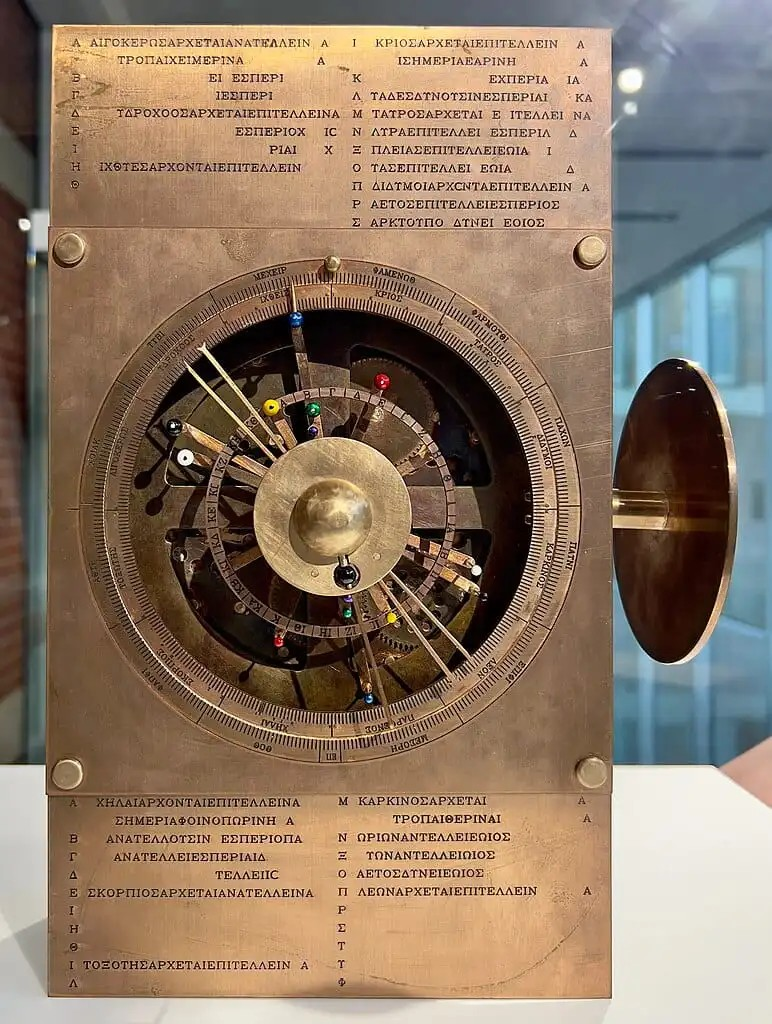
Finds from the Antikythera Mechanism on display at the National Archaeological Museum in Athens (Photo: Vislupus/ Wikimedia Commons)
Gravitational waves, the theory formulated by Albert Einstein in 1916 that supports the theory of general relativity, have been applied by a team of astronomers at the University of Glasgow to investigate the Antikythera Mechanism. The results of the study continue to shed light on amazing functions and data about the advanced technological development and accuracy of the mechanisms of analyzing astronomical objects among the ancient Greeks.
A team of astronomers from the University of Glasgow studied the Antikythera mechanism and shed new light on the workings of this ancient device, which is considered the world’s first analog computer.
The Antikythera Mechanism was discovered in 1901 in a shipwreck near the island of the same name. It’s a discovery and something that has fascinated researchers for decades.
It’s a complex device, about the size of a shoebox. It contains a complex array of tools that allowed the ancient Greeks to predict eclipses and calculate astronomical positions with incredible accuracy for their time.

Additional features revealed
In 2020, new X-ray images of the calendar mechanism ring revealed additional details about the evenly spaced holes around the ring. However, fragmentation of the ring has prevented the exact number of holes originally present. Preliminary analyzes indicated a range of 347 to 367 holes.
In a study recently published in the journal HorologicalThe Glasgow researchers, led by Professor Graham Won, describe how they used two advanced statistical techniques to estimate the likely number of holes in the ring.
With its application Bayesian analysis And his methods Markov chain Monte CarloThe results showed that the calendar ring contained 354 or 355 holes, a number that corresponds to the Greek lunar calendar.
Professor Wan commented: “I became curious about this problem when one of my colleagues passed me on to data collected by YouTuber Chris Podicelic, who was trying to reconstruct the calendar ring. “Over Christmas, I applied statistical techniques to answer the question, and showed us the results,” he said. The ring may contain 354 holes.”

Exceptional precision of the mechanism
At the same time, Dr. Joseph Bailey of the university’s Gravity Research Institute applied techniques used to analyze signals from LIGO gravitational wave detectors.
These techniques (used to measure small ripples in space-time caused by major astronomical events) have been adapted to study the mechanism’s calendar ring.
Woan and Bayley’s joint analysis showed that the holes were set with extreme precision, with an average radial variation of just 0.028 mm between each hole, highlighting the incredible skill of the Greek craftsmen.
Professor Wan concluded: “It is amazing how modern techniques applied in the study of the universe help us understand the mechanism that helped the ancients discover the movements of celestial bodies. We hope that our findings will deepen our understanding of the creation and application of this wonderful mechanism.”
“The dual techniques we applied greatly increase the likelihood that the calendar ring follows the lunar calendar,” Bailey explained.
“This project has given me a new appreciation for the Antikythera Mechanism and the precision that went into its construction.”





More Stories
Is this what the PS5 Pro will look like? (Image)
Finally, Windows 11 24H2 update significantly boosts AMD Ryzen – Windows 11 performance
Heart Surgeon Reveals The 4 Things He ‘Totally Avoids’ In His Life